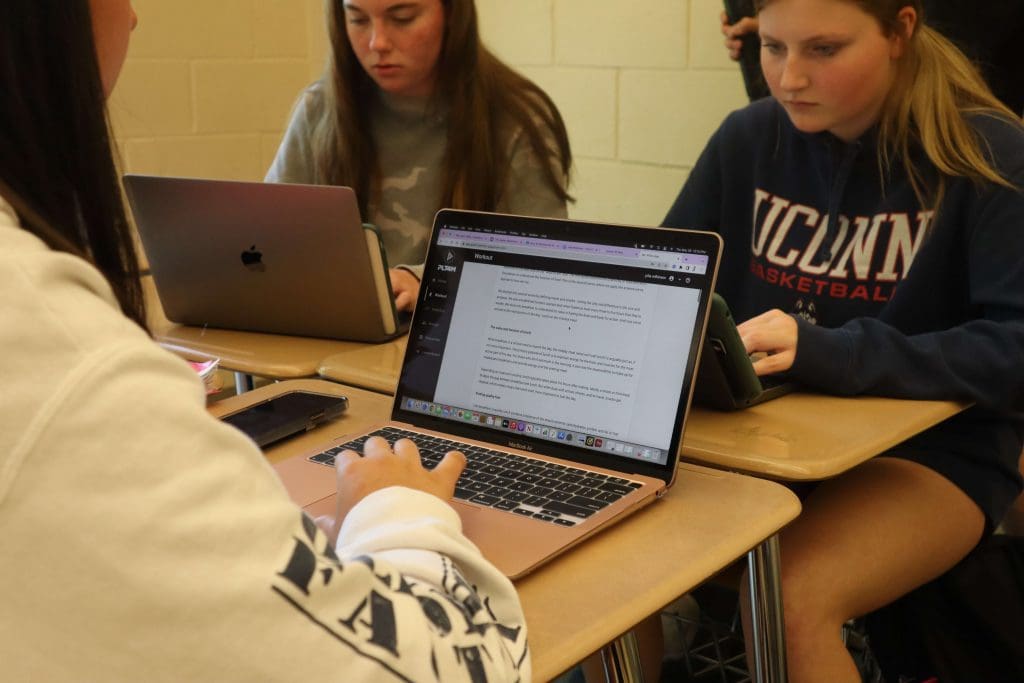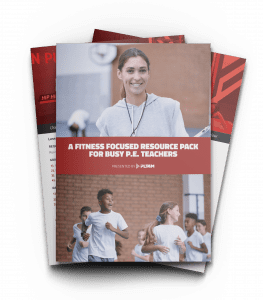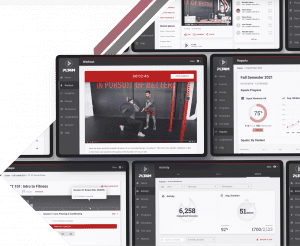The curriculum review process for physical education allows schools to innovate the physical education curriculum. In this article we explore the what, why, and how of a curriculum review process for physical education.
Benefits of Curriculum Review Process
Without a formal curriculum review process, efforts to improve student learning experience can feel disjointed, disorganized, and frustrating. For example, a sole teacher might have hopes to transition to a fitness-focused curriculum but struggle to get other department members on board and invested. Or a group of teachers might have a plan for new programs but fail to get academic administrators to buy in. Most common is that initial changes are made but have yet to be codified and fall apart after a few years.
The most significant benefit to a curriculum review process is that it involves all necessary stakeholders and decision-makers. By formalizing a review process, questions and goals are developed to help everyone get on the same page. Better yet, an effective curriculum review process takes a data-driven approach to validate the efforts and updates to the curriculum.
Finally, a curriculum review process can help to make lasting changes to the student learning experience. By establishing the structure for changes to be evaluated, executed, and reviewed, teachers can elicit real long-term impact.
Free Fitness Lessons For P.E. Classes
Looking to branch out from the traditional games based P.E model? These 15 ready to go lessons can help!
5 Phases To A Curriculum Review Template
Schools and physical education departments can use many ways to execute the curriculum review process. And while each school district might have different expectations, starting with a curriculum review template can allow for an organized and practical approach.
With almost any curriculum review template, there are five major steps or phases that a curriculum review cycle will consist of:
- Review and Evaluate
- Revise
- Implement
- Monitor and Adjust
- Evaluate
Because a curriculum review cycle can take multiple years from start to finish, it is crucial to keep everyone on track. At any stage of the curriculum review process, there should be clearly defined stakeholders and timelines.
For example, a curriculum review template could clearly state that phase 1, “Review and Evaluate,” will take six months and include all curriculum committee members. Later, phase 4, “Monitor and Adjust,” could take 12 months and have only the teachers and department chair of the curriculum committee.
While it might seem unnecessary, it is important to ensure that the timeline and responsibilities are clear to keep on track throughout the entire process.
Example Overview of Curriculum Review Process
Physical Education Curriculum Review Process
Many physical education departments have slowly evolved their curriculum over the years. In an effort to transition from a games-based to a fitness-focused model, many physical education departments have made minor changes to the units and lessons they teach.
Before we outline a curriculum review cycle for physical education below, it is important to note the need for a curriculum committee. To make lasting and effective curriculum change, it is crucial to have all of the necessary stakeholders involved. An appropriate representation of teachers, department chairs, administrators, curriculum directors, and other school officials should be a part of the team.
In addition, many school districts often have community involvement with parents and student representation to help round out the curriculum committee. Whatever group you decide to have, ensure that all parties are empowered and involved in the process.
With that, let’s explore some steps and examples of a curriculum review process for physical education.
Phase 1: Review and Evaluate
The curriculum review process does not require departments to completely overhaul everything and start over. Instead, a review and evaluation process allows departments to see what works well and needs improvement.
Two guiding questions can help to make this process more manageable:
1) What are the goals of our physical education program?
2) What are we currently doing to meet these goals?
Using some version of these two questions, you can subjectively evaluate the different aspects of the current physical education curriculum. For example, you might take a closer look at a particular grade level or class offering and realize it doesn’t fit your larger mission. Or, while a class is close, it needs some changes to better align with your department goals.
After taking a high-level look at your program offerings and classes, the next round of questioning can help you prepare for phase 2.
- What do we currently have in place for curriculum and lesson plans?
- Is the curriculum aligned to physical education standards?
- How are we assessing students’ learning and progress?
- What resources do we currently have (lesson plans, technology, etc.) to execute the curriculum?
Phase 2: Revise
After identifying what is offered within physical education, you are ready to revise the curriculum. But, again, it is helpful to remember that this doesn’t mean you have to start from scratch.
For example, your 9th-grade physical education class is already heading in the right direction for a more fitness-focused curriculum. But, after your review, you identified that the course needs updated resources and a better way to collect student assessment data. Here, you can revise some of the materials being offered to enhance the 9th grade offering better.
In addition to revising specific class curriculum, this stage also presents an opportunity for more significant shifts in program design. For example, many physical education programs will change the curriculum to start on a more fitness-focused trajectory at the middle school level.
This shift helps expose students to different units like fitness, yoga, dance, pilates, boxing, and weightlifting at a younger age.
Phase 1 & 2 Best Practices
The curriculum committee should not go at the project alone in the first two phases of a curriculum review process. The question that can be asked here is, “What are other schools doing?” While each school will approach the curriculum process differently, common pitfalls and best practices can be learned by reaching out to a local school district or program.
While you might find answers via emails and outreach, you could even conduct a site visit. Seeing another school’s curriculum process in action can help spark new ideas and prepare for implementation.
Ready to Learn More?
Schedule a free 10 minute consultation to see how the PLT4M system can help save you time, and empower student learning!
Phase 3: Implement
Now that you have reviewed, evaluated, and revised your curriculum, it is time to implement it.
And while you might be eager to implement everything at once, remember that rolling out a new curriculum takes time. So, although you might want to see immediate results, most effective curriculum rollouts can take multiple years.
Many successful implementations of new curriculum start with just one class or group. This allows teachers to get comfortable with the new curriculum before working on expanding it to all classes and students.
During the implementation process, it is helpful to clearly communicate what is going on to students, families, and fellow educators. Transparency can help to keep everyone engaged with the process. It is okay to say, “This is a work in progress.” While hopefully, you have a smooth implementation, there will be hiccups along the way with anything new.
Phase 4: Monitor and Adjust
A pivotal part of curriculum development is monitoring and adjusting the process. Rarely does everything go as planned on the first attempt. By clearly dedicating time and energy to monitoring and adjusting throughout the curriculum roll-out, teachers and students have a better opportunity to succeed.
One key component to this step is not just using anecdotal evidence but collecting actual data to back up your new curriculum and its effectiveness. This could be in the traditional sense of collecting student assessment data. But you can also conduct surveys and questionaries to see how students perceive the overall experience.
All monitoring should be considered within the larger scope of your curriculum review process. Again, it is crucial to remember that the rollout and adoption of a new curriculum takes time, so it is essential not to take one sample of data and over-analyze it. Have clear parameters for what will warrant adjustments.

Phase 5: Evaluate
Phase 5 is very similar to phase 4 but with a more bird’s eye view. While you will have evaluated your curriculum rollout throughout the process, set a clear time to take a step back and think big picture.
This is where you can continue to use key questions to help evaluate the curriculum process. For example, “Have we improved the overall learning experience for our students?”
Hopefully, you will have countless examples of students who are more engaged, motivated, and improving in physical education. So, what is the story of your physical education program now?
For example, you might have a student who never liked physical education, and now it is their favorite class of the day. Or, you have data showing how much improvement your students have made in key fitness metrics you outlined at the start of the process.
There is really no END to a good curriculum review process but rather a continuation. While your curriculum committee might meet less often or only once a year, the evaluation can help you to make small and large changes to improve the overall learning experience.

Key Takeaways on the Curriculum Review Process
Curriculum development takes time. An effective curriculum review process will take a while, from updating existing courses to potentially creating new courses entirely.
And while all of this information might seem overwhelming, physical education should take the same thorough process as every other subject. By doing so, departments can go from every teacher for themselves to a coordinated and comprehensive approach to physical education. In turn, the overall student learning experience can be enhanced, and more students will be engaged, motivated, and empowered in the subject of physical education.
Need help with your curriculum review process? PLT4M is here to help! We have a team of physical education consultants who help you take a more fitness-focused approach to your physical education throughout the entire process. As a thank you for reading this whole article, we welcome you to sign up for a free 20-minute exploratory call with a member of our team today!
Ready to Learn More?
Schedule a free 10 minute consultation to see how the PLT4M system can help save you time, and empower student learning!












